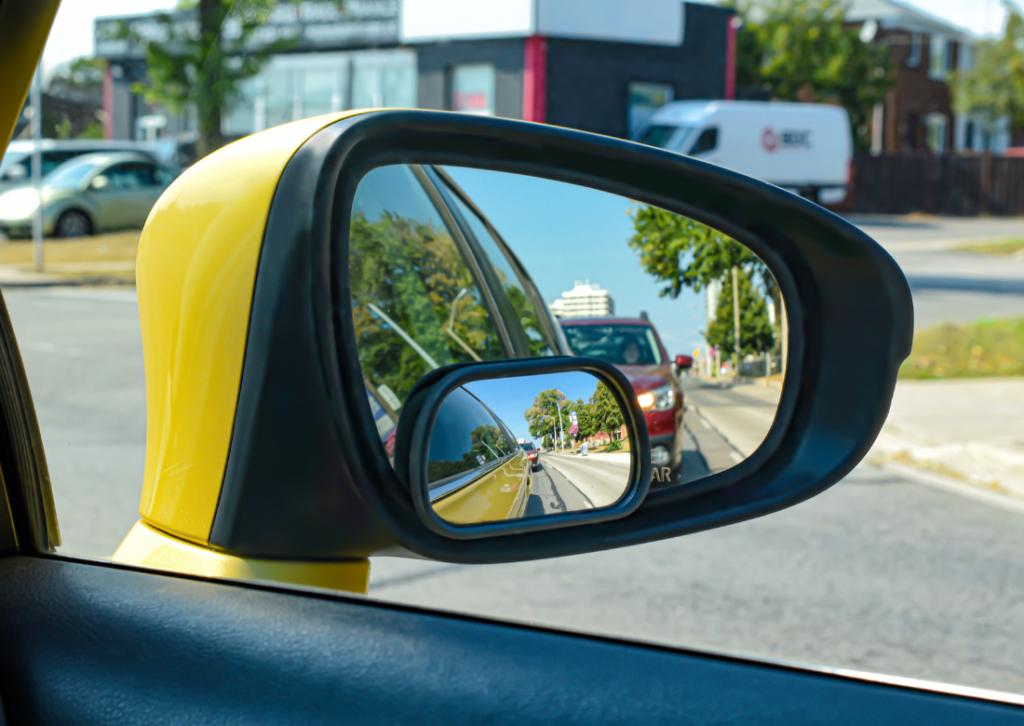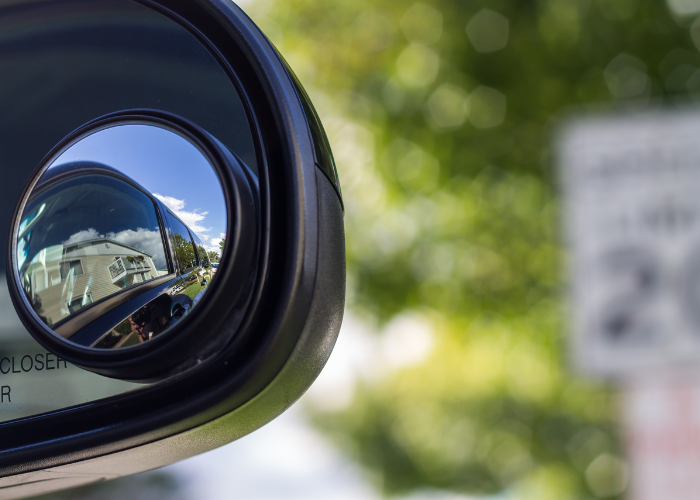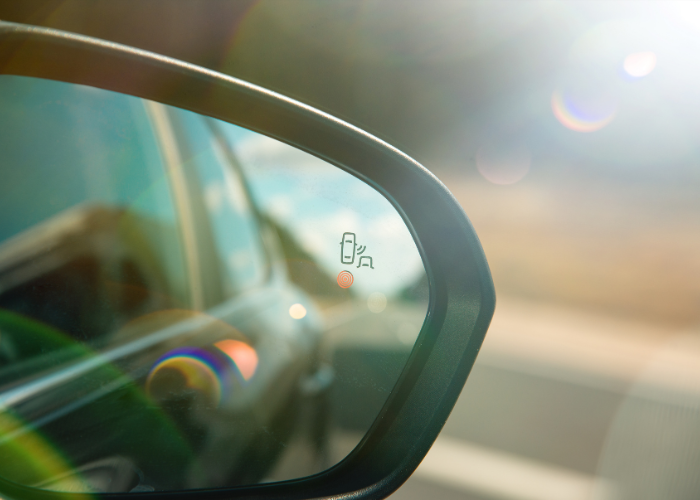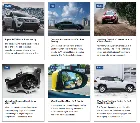

Understanding the Blind Spot Monitor
The Blind Spot Monitor (BSM) is a crucial safety technology incorporated into Toyota vehicles to address one of the most significant challenges for drivers – blind spots. These blind spots are areas around the vehicle that are not visible through the side mirrors or the rearview mirror.
The BSM system utilizes advanced sensors to constantly monitor these blind spot areas. When a vehicle enters the driver’s blind spot, the BSM system activates, promptly alerting the driver through visual or auditory cues, depending on the specific Toyota model. This timely warning empowers drivers to make decisions.

How Does BSM Work
The functionality of the Blind Spot Monitor (BSM) relies on a sophisticated process. Mounted on the rear bumper or side mirrors, the sensors employ radar or ultrasonic waves to assess the distance and speed of objects or vehicles present in the adjacent lanes.
When an approaching vehicle is detected within the predetermined blind spot zone, the BSM system swiftly processes this information. It then triggers a warning signal, like a flashing indicator or an audible alert, for the driver.The real-time and seamless nature of this process ensures drivers are well-informed of potential hazards.
What Does Bsm Mean On A Toyota
The Blind Spot Monitor (BSM) bestows numerous advantages upon Toyota owners, making it a highly sought-after safety feature. Foremost, it significantly enhances driving safety by providing an extra layer of awareness, thus reducing the likelihood of accidents caused by unintentional lane-changing errors.
BSM proves to be especially valuable during adverse weather conditions, where visibility might be compromised. Furthermore, the system acts as a reliable co-pilot, benefiting both experienced and inexperienced drivers alike, and even those momentarily distracted, ensuring they remain informed about potential hazards lurking in their blind spots.

Limitations and Considerations
While the Blind Spot Monitor is a valuable safety addition, it does come with certain limitations that users must consider. The system’s functionality depends on the accuracy of its sensors, and adverse weather conditions like heavy rain, snow, or fog may affect their performance.
Similarly, sensor blockages due to dirt or debris could hinder the system’s effectiveness. Therefore, drivers must remain vigilant and never solely rely on the BSM; they should always practice proper visual checks before making lane changes. Regularly cleaning and maintaining the sensors will help ensure the system works optimally.

The Role of BSM in Road Safety
In recent years, road safety has emerged as a paramount concern for both automobile manufacturers and governments worldwide. The Blind Spot Monitor (BSM) is a crucial component of Toyota’s comprehensive safety package, playing a pivotal role in reducing accidents and enhancing road safety.
In recent years, road safety has emerged as a paramount concern for both automobile manufacturers and governments worldwide. The Blind Spot Monitor (BSM) is a crucial component of Toyota’s comprehensive safety package, playing a pivotal role in reducing accidents and enhancing road safety.
Frequently Asked Questions
Is BSM effective during adverse weather conditions?
While BSM is a valuable safety feature, its effectiveness can be affected by adverse weather conditions such as heavy rain, snow, or fog. Reduced visibility might impact the sensors’ performance, making it essential for drivers to remain attentive and not solely rely on the BSM system during such conditions.
Can BSM replace the need for visual checks before changing lanes?
No, the Blind Spot Monitor is not a substitute for visual checks before changing lanes. Drivers should always practice proper visual checks to ensure there are no vehicles or obstacles in their blind spots. BSM serves as a complement to these checks, providing an additional layer of safety.
Does BSM cater only to inexperienced drivers?
No, Blind Spot Monitor benefits both inexperienced and experienced drivers alike. While it is particularly helpful for less experienced drivers, it acts as a valuable safety feature for all drivers, assisting them in avoiding potential collisions and promoting safer driving practices.
What are the limitations of BSM?
The limitations of the Blind Spot Monitor include its dependency on sensors, which may be affected by adverse weather conditions or blockages due to dirt or debris. Additionally, BSM is not infallible and should be used as a supportive safety measure, not a replacement for responsible driving practices.
Should drivers consider BSM when purchasing a new Toyota vehicle?
Yes, drivers should consider opting for a Toyota vehicle equipped with the Blind Spot Monitor. BSM offers an added layer of protection and peace of mind, enhancing driving safety and contributing to a safer road environment for all road users.
Conclusion
The Blind Spot Monitor (BSM) is a valuable safety feature offered by Toyota to enhance driver awareness and minimize the risks associated with blind spots. By utilizing advanced sensors and warning systems, BSM serves as a reliable co-pilot, alerting drivers to potential dangers during lane changes.
Although it has its limitations, the overall benefits of BSM in improving road safety cannot be understated. If you are considering a new Toyota vehicle, opting for one equipped with BSM can offer you an added layer of protection and peace of mind while on the road.























